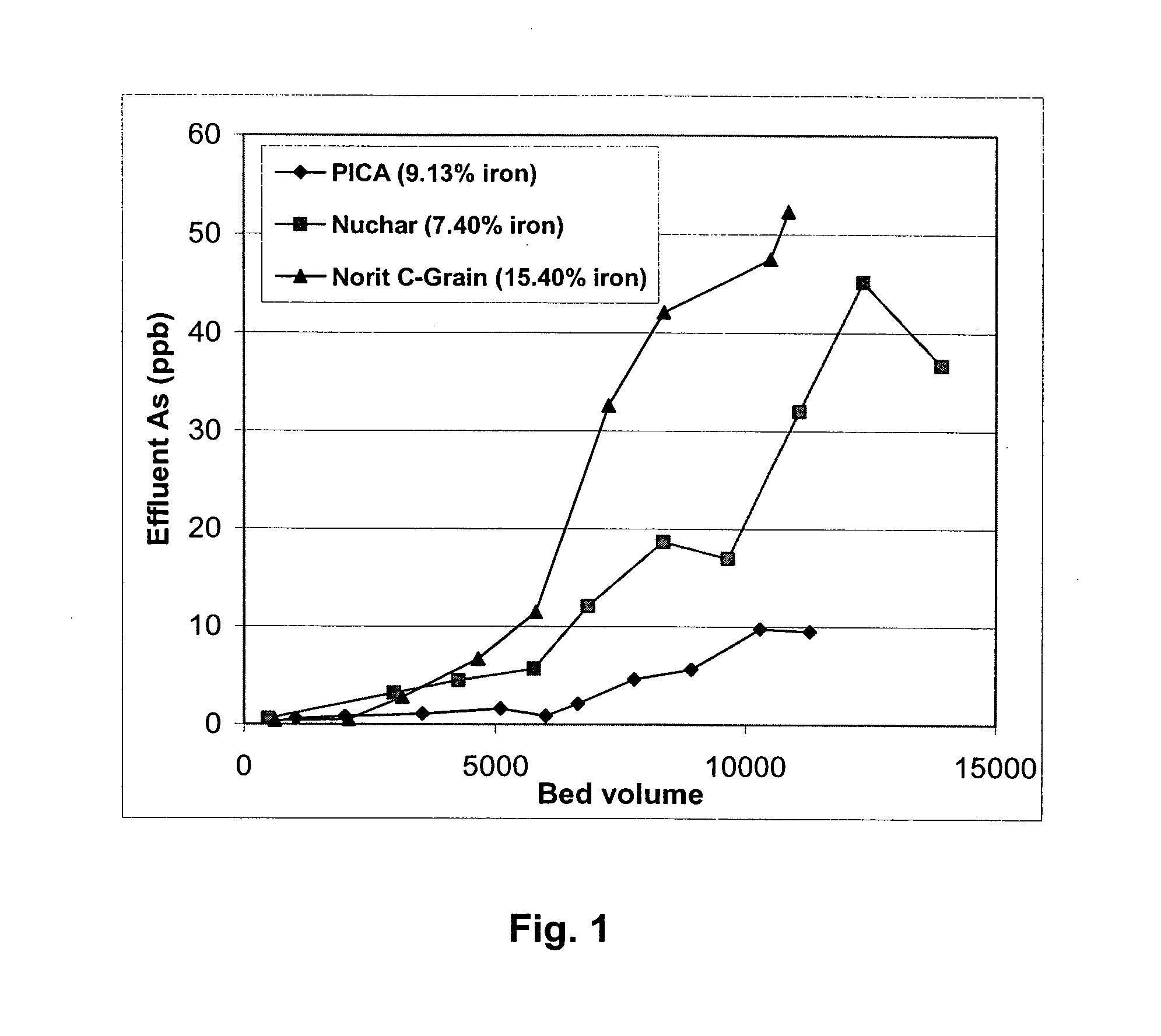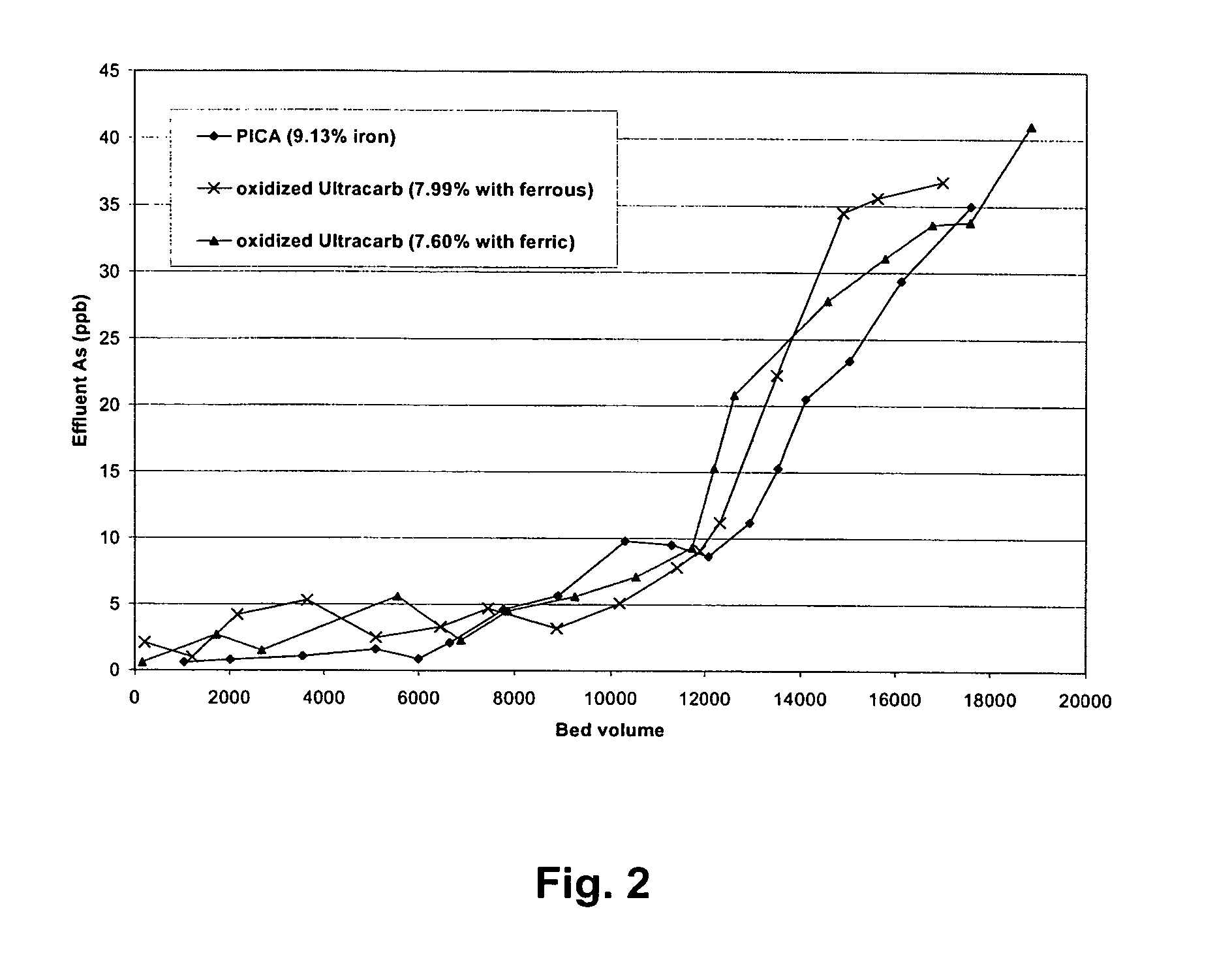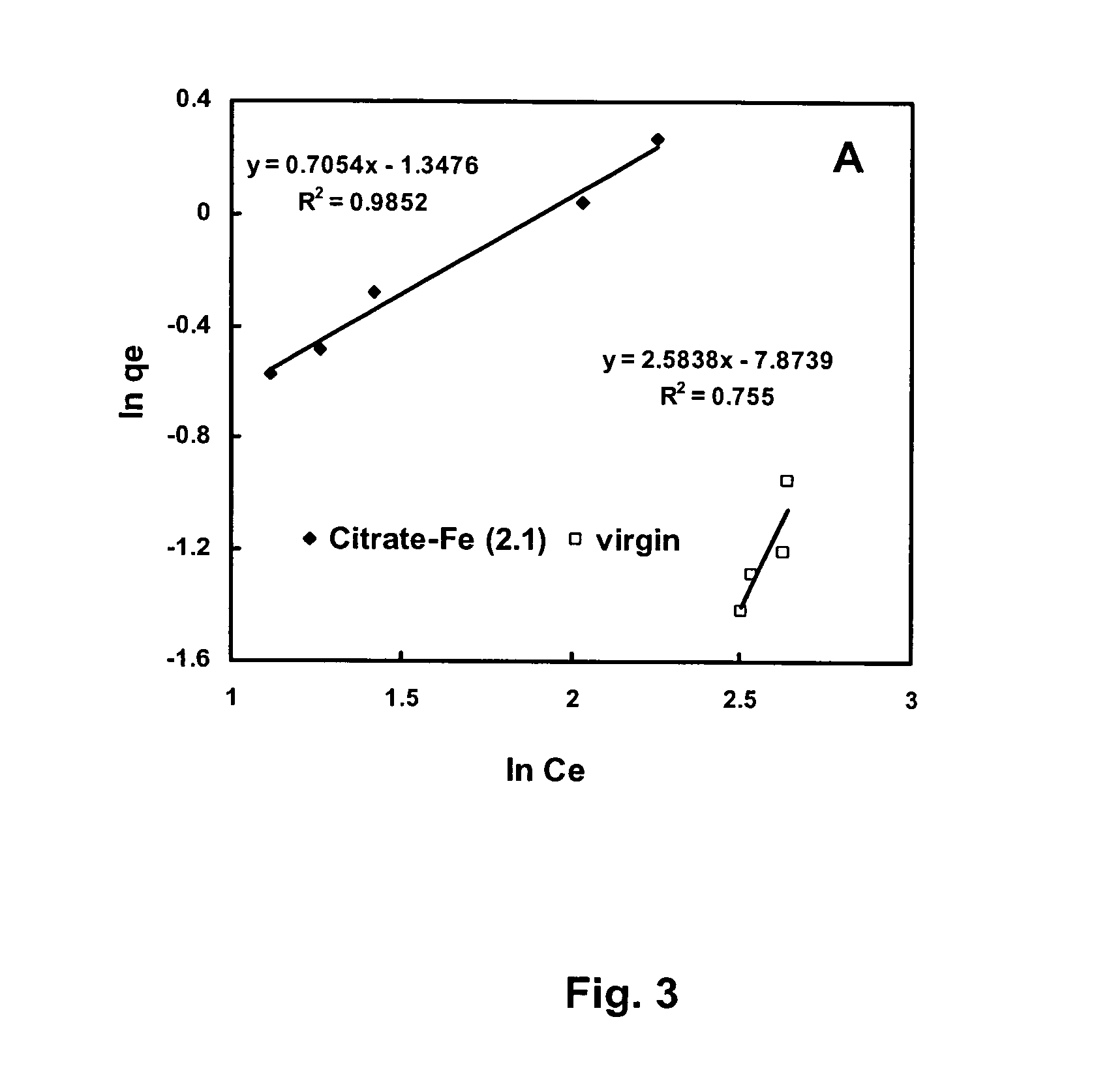Method for oxyanion removal from ground water
a technology of oxyanion removal and ground water, which is applied in the direction of water/sewage treatment by ion exchange, nuclear engineering, separation processes, etc., can solve the problems of significant amount of headloss pressure built up in the gfh system, and the possibility of adverse effects of chlorate on people's thyroid gland
- Summary
- Abstract
- Description
- Claims
- Application Information
AI Technical Summary
Benefits of technology
Problems solved by technology
Method used
Image
Examples
example 1
[0087]One method tested to increase iron loading was carbon oxidation. Studies have shown that the higher number of adsorbed iron ions following oxidative carbon modification correlated with a larger number of surface carboxyl- and hydroxyl-like functional groups. Liquid-phase oxidation by oxidizing agents such as concentrated nitric acid, H2O2, (NH4)2S2O8, and other oxidizing agents was proven effective in creating oxygen-containing surface groups.
[0088]Three oxidation protocols were tested:
[0089](1) Oxidation by nitric acid: 2 g of carbon (US mesh 200×400) was mixed with 100 mL of 70% nitric acid for 1 hour at room temperature.
[0090](2) Oxidation by nitric acid / sulfuric acid mixture: 2 g of carbon (US mesh 200×400) was mixed with 100 mL of acid mixture (50 mL of each concentrated acid) for 1 hour at room temperature.
[0091](3) Oxidation by nitric acid, acetic anhydride and potassium permanganate: In this case, the activated carbon was first oxidized by adding a mixture of 15 g GAC ...
example 2
[0096]Rapid small-scale column tests were carried out with oxidized and then iron-loaded NORIT C-Grain, Nuchar and PICA carbons since those carbons had very high iron loading (7.4-15%). FIGS. 1 and 2 are the column test result for arsenic removal by those three carbons. Breakthrough bed volume was set as the bed volume of water passed through column until the As concentration from the effluent first reaches 10 ppb. FIGS. 1 and 2 shows that oxidized PICA and Ultracarb carbon showed the highest capacity for arsenic removal.
example 3
[0097]The inventors also conducted tests to determine how much iron could be preloaded onto activated carbon when the iron was complexed with organic carboxyl species in the water phase be sorption into the activated carbon. We have hypothesized that because activated carbon has a high surface area, if we can cover this surface with a fine film of iron, then we can get the most efficient removal of arsenic, on the basis of pounds of iron required per pound of arsenic removed. Moreover, if we pre-loaded activated carbon with fatty acid or chelating agent-iron complexes, we could increase the GAC's capacity to adsorb iron, and hence arsenic. Citrate acid, L-Glutamic acid and EDTA were tested during the period. In addition, ferric ammonia citrate was used directly for iron loading instead of citric acid plus ferric chloride.
[0098]Two loading protocols were employed for iron loading:
[0099](1) One-step protocol: A predetermined amount of carbon was added to a fatty acid or chelating agen...
PUM
| Property | Measurement | Unit |
|---|---|---|
| pH | aaaaa | aaaaa |
| pH | aaaaa | aaaaa |
| temperature | aaaaa | aaaaa |
Abstract
Description
Claims
Application Information
 Login to View More
Login to View More - R&D
- Intellectual Property
- Life Sciences
- Materials
- Tech Scout
- Unparalleled Data Quality
- Higher Quality Content
- 60% Fewer Hallucinations
Browse by: Latest US Patents, China's latest patents, Technical Efficacy Thesaurus, Application Domain, Technology Topic, Popular Technical Reports.
© 2025 PatSnap. All rights reserved.Legal|Privacy policy|Modern Slavery Act Transparency Statement|Sitemap|About US| Contact US: help@patsnap.com



